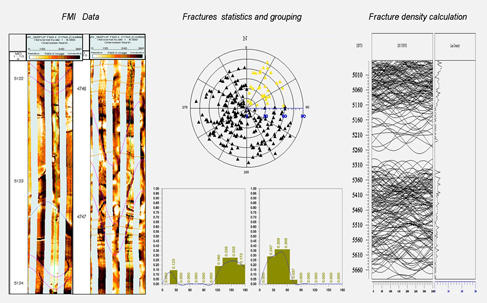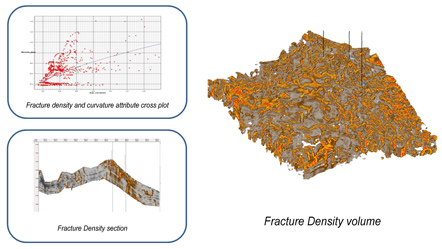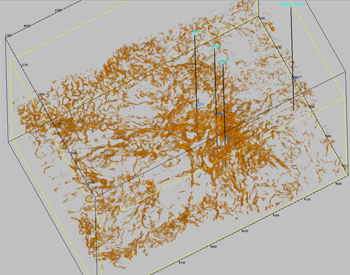
Latest News |
||
Upcoming Events |
||
OpenPetro Suite OverviewOPS is an integrated geophysics and geology research software system which was developed by PST. The basic infrastructure and data management functions of this system are of great perfection. Up to now, the completed applications, which based on this system, include seismic attribute computation, fault imaging, reservoir fracture analysis, seismic spectral decomposition, random seismic inversion, etc. Advanced Geometric AttributesUsually the seismic curvature is acquired by scanning in an ellipsoik, which is low accuracy. In FracPM, restrained by angles, azimuths, scanning curved surfaces, we calculate geometry attributes by global optimization. The advanced geometric attributes are used to imaging faults or cracks of high resolution.
The evolution of seismic geometric attributes
Scanning in ellipsoids; in curved surfaces
Seismic stack section vs. its geometric attributes
A geometric attribute time slice
Geometric attribute time slice Seismic Spectrum DecompositionSeismic spectral decomposition includes short time Fourier transform, CWT wavelet transform, S transform, S transform and wavelet decomposition of MPD. Among them, the decomposition based on MPD has the highest resolution.
Four algorithms of spectral decomposition
30Hz of MPD decomposition Fracture ResearchStep 1 Seismic Curvature CalculationBig-scale fractures, or faults can be identified directly by seismic geometric attributes. However, Small-scale fractures which contribute to the permeability of the reservoir can only be identified through the data from boreholes, such as FMI. Step 2 Fracture AnalysisThe fractures derived from FMI data can be grouped according to their azimuths and inclinations. Then the line densities, area densities and volume densities for each group will be computed.
Step 3 Fracture Density PredictionThe correlation analysis between borehole fracture density and seismic geometric attributes is made. Some sensitive attributes are selected to be constraining conditions. Then fracture density volume can be computed by extrapolation from well fracture density curve.
Step 4 Fracture Permeability PredictionAfter acquiring the fracture density volume, with the fracture conductivity derived from well test data, OPS will be able to compute the fracture permeability.
|









